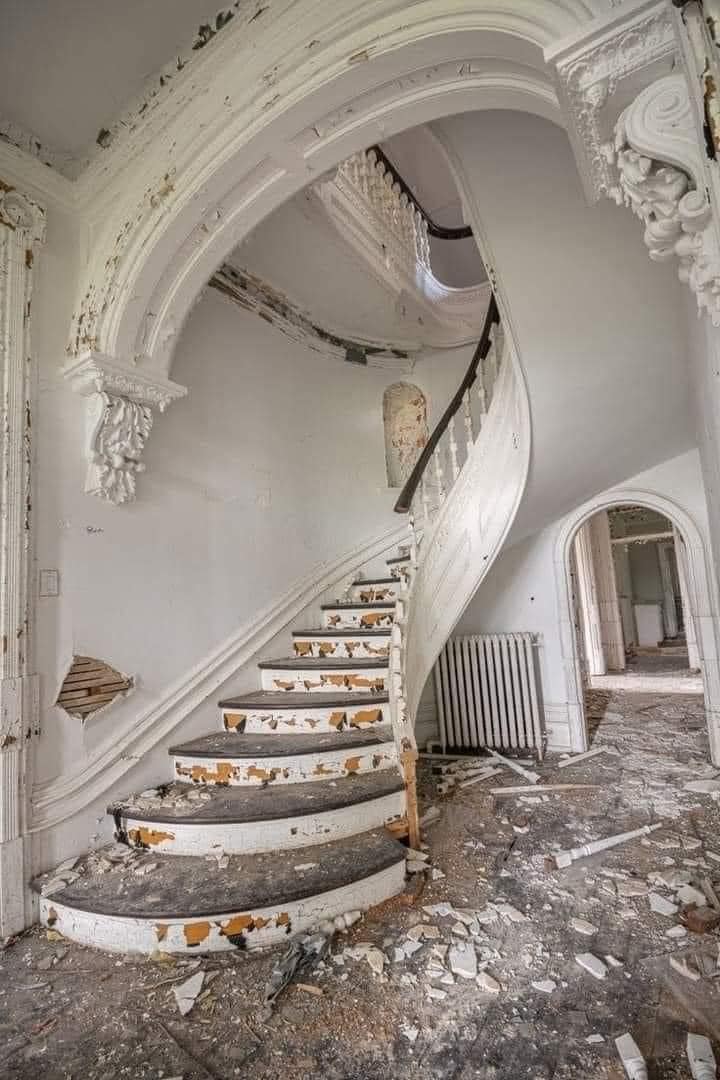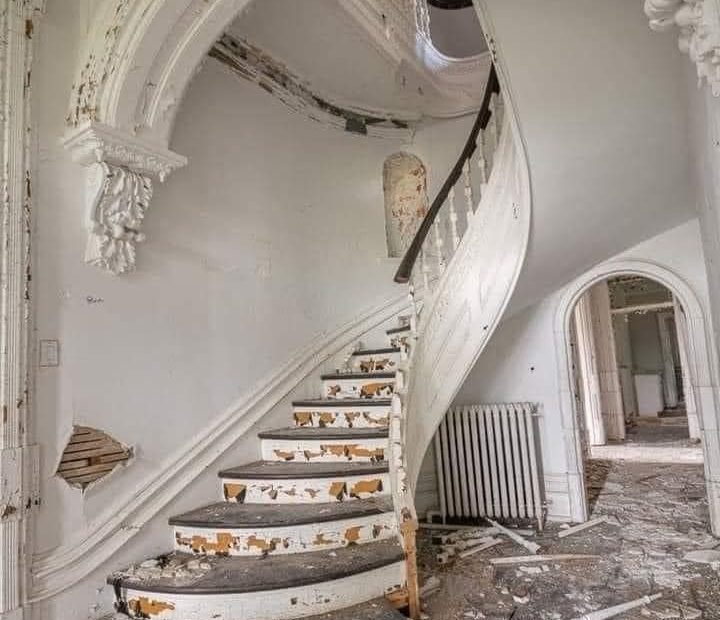An early 1900s abandoned Victorian mansion is a hauntingly beautiful relic of a bygone era. These architectural treasures, often found hidden in wooded areas or at the edges of forgotten towns, offer a glimpse into a time of intricate design, craftsmanship, and opulence.
Architectural Features
Victorian mansions built in the early 1900s typically exhibit the Queen Anne style, characterized by steeply pitched roofs, asymmetrical facades, and an abundance of decorative details. Large wrap-around porches with turned posts and lace-like brackets often frame the front of the house, providing both elegance and functionality. Turrets or towers, rising dramatically above the roofline, add a touch of grandeur, while bay windows and stained glass accents create an interplay of light and shadow within the home.
Inside, these mansions are a showcase of woodwork craftsmanship. Hand-carved banisters, intricate crown molding, and built-in cabinetry speak to the era’s attention to detail. The homes often include parquet flooring and elaborate fireplaces adorned with tiles or carved mantels. Hidden spaces, such as servants’ staircases and dumbwaiters, reflect the practicalities of managing such a grand residence in its heyday.
State of Decay
Decades of abandonment leave these mansions in various states of disrepair. Nature often reclaims the structure, with ivy crawling over the walls and trees pressing against broken windows. Inside, plaster may crumble from the walls, revealing the wooden lath beneath, while water damage creates rippling effects on ceilings and floors. Once-grand chandeliers hang precariously, and wallpaper peels back to reveal layers of history.
Despite the decay, remnants of its former splendor often linger. A faded Persian rug might still cover part of a floor, and tarnished brass doorknobs may hint at the house’s former luxury. Forgotten items, such as antique furniture or personal belongings, sometimes remain, telling the story of those who once lived there.
Historical Context
Abandoned Victorian mansions from this period often reflect the economic shifts of the early 20th century. Many were built during the Gilded Age, a time of rapid industrial growth and wealth accumulation, only to be abandoned as fortunes dwindled or industries moved elsewhere. Some of these homes were left behind during the Great Depression while others became too expensive to maintain and were subsequently deserted.

These mansions hold a special allure for urban explorers and historians. They provide a tangible connection to the past, allowing visitors to imagine the lives of their original inhabitants. Many of these homes are also featured in art and photography, capturing their eerie beauty and the bittersweet passage of time.
Efforts to restore such properties are rare but deeply rewarding. Preservationists often face challenges, including extensive structural damage and the high cost of restoration, but the results can bring a community together, reviving a piece of its history.
Exploring Safely
For those drawn to explore an abandoned Victorian mansion, it is crucial to prioritize safety and respect. Structural instability, potential exposure to hazardous materials, and legal issues related to trespassing must all be considered. Guided tours or preservation societies sometimes offer access to such properties, providing a safer way to experience their grandeur.
The early 1900s Victorian mansion, even in its abandoned state, remains a testament to a time of artistic ambition and social complexity, offering a haunting yet inspiring link to the past.
The story of an abandoned early 1900s Victorian mansion goes beyond its ornate design and decaying facade; it unfolds layers of history, mystery, and cultural significance that captivate the imagination.
Victorian mansions of this era often combined multiple architectural influences, blending Queen Anne, Gothic Revival, and Romanesque styles. These homes were not merely built for function but to serve as statements of wealth and sophistication.
Windows and Glasswork: Large, often arched or multi-pane windows punctuate the walls, sometimes featuring stained glass panels depicting floral or geometric patterns. These windows not only illuminated the home with natural light but also showcased the artistic preferences of the period.
Ornamentation: Gables adorned with fish-scale shingles, carved wooden brackets, and spindled friezes were hallmarks of the style. Balconies and dormer windows added depth to the structure, giving it a lively, layered appearance.
Interiors: Inside, the design emphasized luxury and innovation. Pocket doors, ornate ceiling medallions, and inlaid wood floors reflected a high level of craftsmanship. The layout often included formal parlors, dining rooms, and music rooms, each with unique design motifs.
Layers of Mystery
The abandonment of these mansions often leaves behind an aura of mystery. Why was such a grand home left to decay? In many cases, the reasons are tied to historical events:
Economic Downturns: The Great Depression or shifts in local economies caused families to lose their wealth, leaving homes uninhabited.
Urban Migration: As cities expanded, rural mansions became less practical, with families moving closer to urban centers for work.
Estate Disputes: Complex inheritance issues or legal battles sometimes left properties in limbo, contributing to their decline.
Personal artifacts discovered in such mansions further deepen the intrigue. A family portrait, a letter in a drawer, or a child’s toy in the attic offers a glimpse into the lives that once thrived there, leaving modern visitors to wonder about the stories behind them.
Nature’s Reclamation
Abandoned Victorian mansions often become canvases for nature’s artistry. Over decades, vines wind their way up the walls, while moss and lichen creep across stone or brick foundations. Trees grow through porches, and wildflowers blanket once-manicured gardens. This natural reclamation transforms the house into a romantic, albeit eerie, spectacle.
Seasonal changes enhance the mansion’s atmosphere. In summer, the overgrowth creates a jungle-like ambiance, while autumn’s golden leaves add a nostalgic beauty. Winter strips the landscape bare, exposing the mansion’s skeleton, and spring brings a fleeting renewal of color and life.
For communities, these mansions are bittersweet symbols. On one hand, they represent lost prosperity and faded grandeur. On the other hand, they hold untapped potential.
Efforts to preserve and repurpose such properties can spark local pride. Abandoned mansions have been transformed into museums, event spaces, or bed-and-breakfasts, preserving their historical integrity while giving them a modern function. Such restoration projects often uncover hidden details—original blueprints, forgotten murals, or antique fixtures—that become centerpieces of their renewed life.
